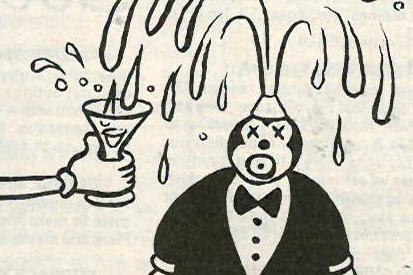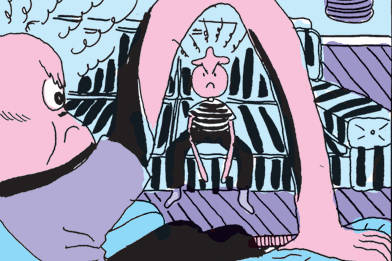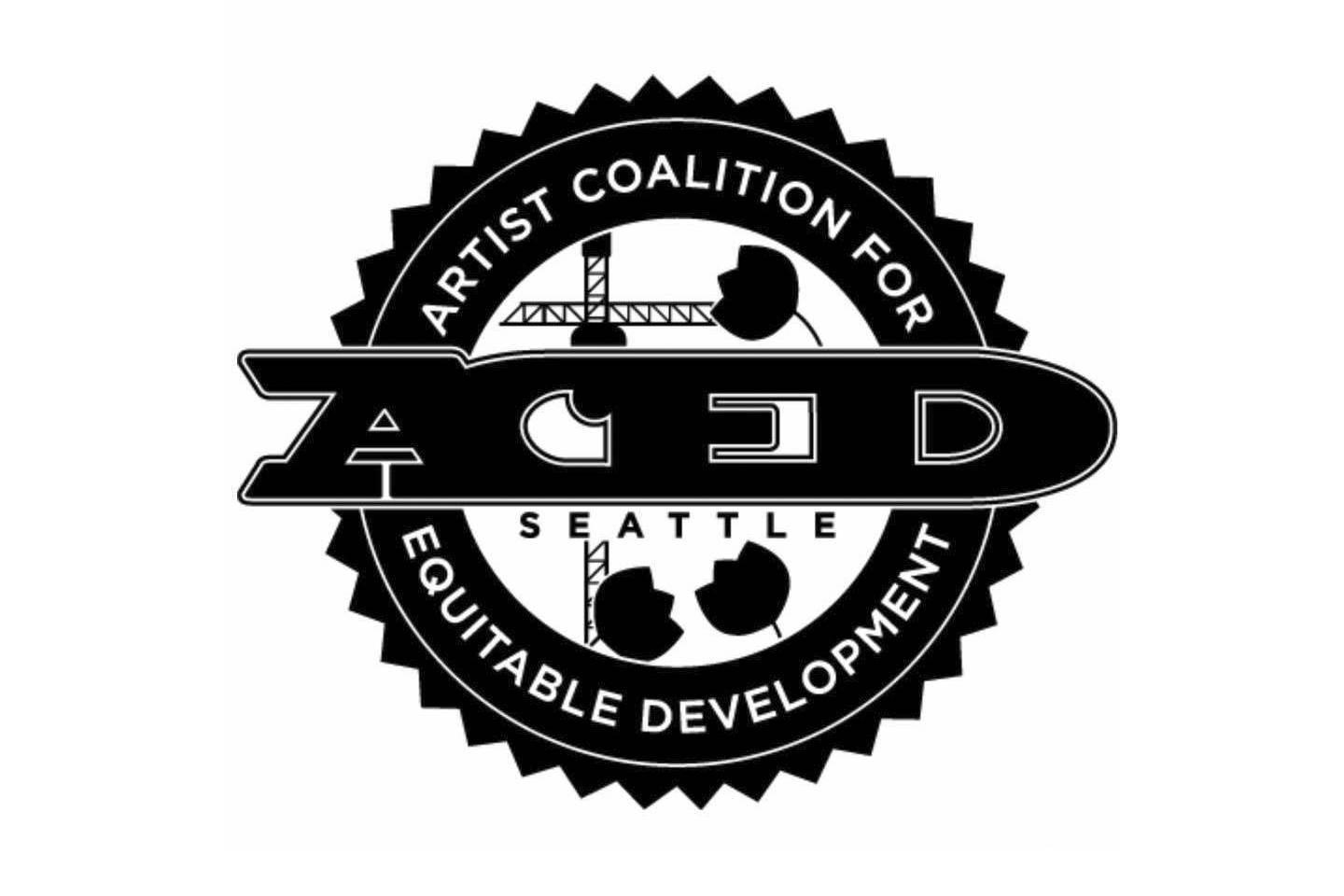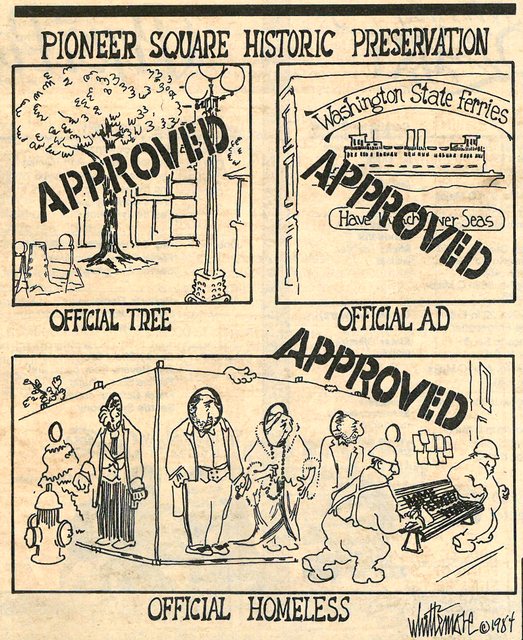
April 11, 1984—Thomas Whittemore majored in primatology (the study of monkeys) at Harvard and now serves as a Neighborhood District Coordinator for the City of Seattle, but in the early ’80s, he also served as Seattle Weekly’s primary political cartoonist.
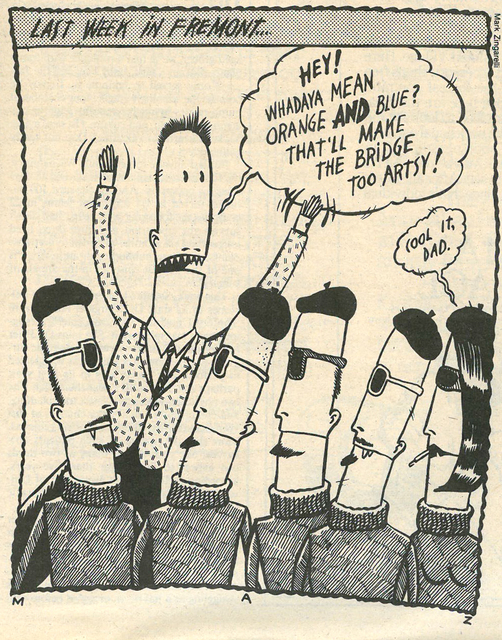
August 14, 1985—From 1984 to 1986, Mark Zingarelli’s fang-toothed, tube-headed caricatures skewered Seattle culture and politics week to week. Zingarelli also drew the cover of Seattle Weekly’s first “Best Of” issue in 1986, featuring a goofy slug character in the rain.
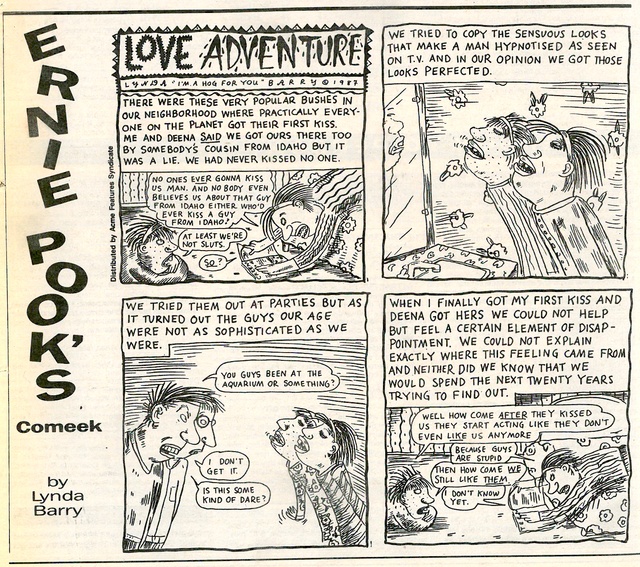
March 4, 1987—Perhaps one of the most famous comic artists featured in Seattle Weekly’s pages, Evergreen grad Lynda Barry contributed the legendary strip Ernie Pook’s Comeek to the paper from 1986 to 2000.
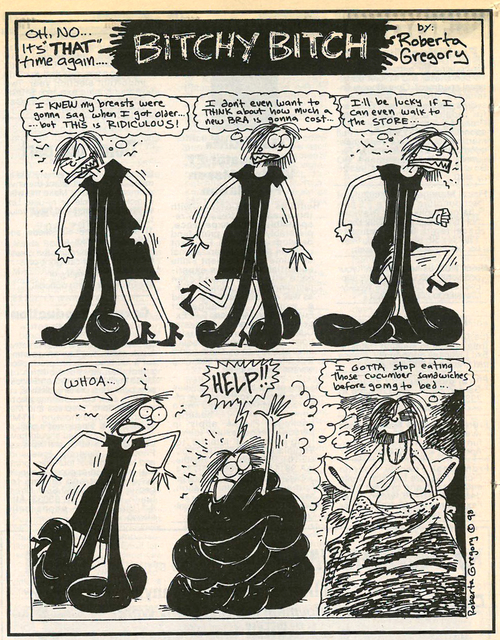
April 9, 1998—Starting her career in the all-female “Wimmen’s Comix” anthologies of the ’70s, Roberta Gregory continued her feminist funny streak with her Bitchy Bitch series, which ran from 1998 to 1999 in the Weekly.
June 11, 1998—Ellen Forney mentions reporting this Seattle Weekly piece on Judy Blume in her celebrated graphic novel Marbles.
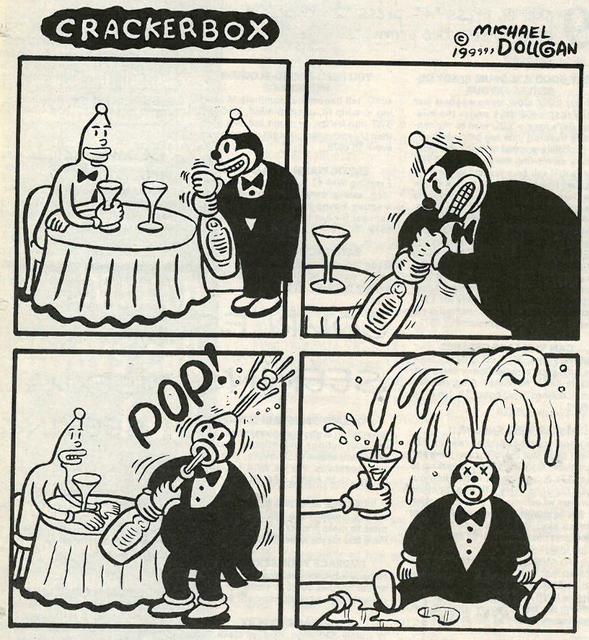
Jan. 6, 2000—Michael Dougan’s Crackerbox series ran in the paper from the late ’90s to 2000. His sock-puppet character appeared in the paper as early as 1984, when Dougan was still primarily a spot illustrator for Seattle Weekly.
![Panels From the Past: Looking Back on 40 Years of Seattle Weekly ComixProvincial jokes, surreal strips, feminist funnies and FBI disappearings.By Kelton Sears Tue., Mar 29 2016 at 06:15PM According to Fantagraphics Bookstore & Gallery manager/unofficial local historian Larry Reid, Seattle Weekly was not very hot on comix in the beginning."When I opened Rosco Louie gallery in 1978 in the old St. Charles Hotel building in Pioneer Square, the Weekly offices were situated directly above my space," Reid wrote me. "I was a punk (in every sense of the word) and would frequently host obnoxiously loud punk rock shows when the paper was on deadline. I showed [Lynda] Barry, Charles Burns, [Art] Spiegelman, [Gary] Panter, and other comix artists back then, but the Weekly generally took a dim view of my efforts. They warmed up a little when they moved to the Terminal Sales building north of the Market."Flipping through tome after tome of dense, 1000 lbs. Weekly archives, Reid's story checked out—aside from the stray scratchy illustration with text, the paper was comix-free in the early days. But starting in 1981, with the paper's first reocurring strip, Seattle Weekly officially embarked on a comix journey that, despite periodical ups and downs, has survived to the present day. Forty years after the founding of Seattle Weekly, we're very proud to stand today as the only Seattle newspaper still running regular weekly strips from PNW comic artists, something the ridiculously stacked comix community here has made an absolute joy. Below, we've collected a sampling of strips and panels from just a few of the local artists whose work we've had the honor of publishing over these four decades. Enjoy all the historic ha-ha's:Sept. 23, 1981—Fred Hilliard was the first regularly featured cartoonist in Seattle Weekly with his provincial one-panel series Hilliard.April 11, 1984—Thomas Whittemore majored in primatology (the study of monkeys) at Harvard and now serves as a Neighborhood District Coordinator for the City of Seattle, but in the early ’80s, he also served as Seattle Weekly’s primary political cartoonist.August 14, 1985—From 1984 to 1986, Mark Zingarelli’s fang-toothed, tube-headed caricatures skewered Seattle culture and politics week to week. Zingarelli also drew the cover of Seattle Weekly’s first “Best Of” issue in 1986, featuring a goofy slug character in the rain.March 4, 1987—Perhaps one of the most famous comic artists featured in Seattle Weekly’s pages, Evergreen grad Lynda Barry contributed the legendary strip Ernie Pook’s Comeek to the paper from 1986 to 2000.April 9, 1998—Starting her career in the all-female “Wimmen’s Comix” anthologies of the ’70s, Roberta Gregory continued her feminist funny streak with her Bitchy Bitch series, which ran from 1998 to 1999 in the Weekly.June 11, 1998—Ellen Forney mentions reporting this Seattle Weekly piece on Judy Blume in her celebrated graphic novel Marbles.Jan. 6, 2000—Michael Dougan’s Crackerbox series ran in the paper from the late ’90s to 2000. His sock-puppet character appeared in the paper as early as 1984, when Dougan was still primarily a spot illustrator for Seattle Weekly.August 25, 2010—Molly Norris’ punky one-panels were a regular feature of Seattle Weekly in 2010 until, under FBI advisement, she vanished that September. The reason? A comic Norris published on her website that April kicked off global controversy and drew death threats for proposing an “Everybody Draw Mohammed Day.” Norris hasn’t been seen since.](https://www.seattleweekly.com/wp-content/uploads/2016/05/web1_160330-SEA-norris.jpg)
Panels From the Past: Looking Back on 40 Years of Seattle Weekly Comix Provincial jokes, surreal strips, feminist funnies and FBI disappearings. By Kelton Sears Tue., Mar 29 2016 at 06:15PM According to Fantagraphics Bookstore & Gallery manager/unofficial local historian Larry Reid, Seattle Weekly was not very hot on comix in the beginning. “When I opened Rosco Louie gallery in 1978 in the old St. Charles Hotel building in Pioneer Square, the Weekly offices were situated directly above my space,” Reid wrote me. “I was a punk (in every sense of the word) and would frequently host obnoxiously loud punk rock shows when the paper was on deadline. I showed [Lynda] Barry, Charles Burns, [Art] Spiegelman, [Gary] Panter, and other comix artists back then, but the Weekly generally took a dim view of my efforts. They warmed up a little when they moved to the Terminal Sales building north of the Market.” Flipping through tome after tome of dense, 1000 lbs. Weekly archives, Reid’s story checked out—aside from the stray scratchy illustration with text, the paper was comix-free in the early days. But starting in 1981, with the paper’s first reocurring strip, Seattle Weekly officially embarked on a comix journey that, despite periodical ups and downs, has survived to the present day. Forty years after the founding of Seattle Weekly, we’re very proud to stand today as the only Seattle newspaper still running regular weekly strips from PNW comic artists, something the ridiculously stacked comix community here has made an absolute joy. Below, we’ve collected a sampling of strips and panels from just a few of the local artists whose work we’ve had the honor of publishing over these four decades. Enjoy all the historic ha-ha’s: Sept. 23, 1981—Fred Hilliard was the first regularly featured cartoonist in Seattle Weekly with his provincial one-panel series Hilliard. April 11, 1984—Thomas Whittemore majored in primatology (the study of monkeys) at Harvard and now serves as a Neighborhood District Coordinator for the City of Seattle, but in the early ’80s, he also served as Seattle Weekly’s primary political cartoonist. August 14, 1985—From 1984 to 1986, Mark Zingarelli’s fang-toothed, tube-headed caricatures skewered Seattle culture and politics week to week. Zingarelli also drew the cover of Seattle Weekly’s first “Best Of” issue in 1986, featuring a goofy slug character in the rain. March 4, 1987—Perhaps one of the most famous comic artists featured in Seattle Weekly’s pages, Evergreen grad Lynda Barry contributed the legendary strip Ernie Pook’s Comeek to the paper from 1986 to 2000. April 9, 1998—Starting her career in the all-female “Wimmen’s Comix” anthologies of the ’70s, Roberta Gregory continued her feminist funny streak with her Bitchy Bitch series, which ran from 1998 to 1999 in the Weekly. June 11, 1998—Ellen Forney mentions reporting this Seattle Weekly piece on Judy Blume in her celebrated graphic novel Marbles. Jan. 6, 2000—Michael Dougan’s Crackerbox series ran in the paper from the late ’90s to 2000. His sock-puppet character appeared in the paper as early as 1984, when Dougan was still primarily a spot illustrator for Seattle Weekly. August 25, 2010—Molly Norris’ punky one-panels were a regular feature of Seattle Weekly in 2010 until, under FBI advisement, she vanished that September. The reason? A comic Norris published on her website that April kicked off global controversy and drew death threats for proposing an “Everybody Draw Mohammed Day.” Norris hasn’t been seen since.
